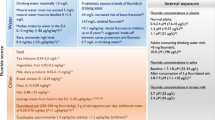Summary
Various single doses of ENU and MNU given to rats at the perinatal age caused lethal damage in proliferating cells only; this acute effect was observed in both neural and extraneural tissues. In the central nervous system, proliferating cells are confined to the subependymal and the external granular matrices including waves of cells migrating out from them. Semi-quantitative measurements on the percentages of lethally damaged cells and the dose-levels of both drugs were performed for these matrices. Plotting these data showed a linear relationship, which indicates that the amount of alkylating groups administered is the factor responsible for the cellular injury observed. Moreover, at all ages investigated during the period of cerebral maturation the percentage of lethally damaged cells within a proliferating system for a given equimolar dose of either ENU or MNU was the same. The extent of mitotic inhibition caused by these drugs was calculated also and was found to be the same for both ENU and MNU in equimolar doses; this inhibition became complete at higher doses than 120 mg/kg body weight. Non-dividing cells in both neural and extraneural tissues appeared to be resistant to lethal damage within the dose-range used in this study. Sublethal damage and subsequent repair synthesis cannot be ruled out, however. The possible role of this repair mechanism in the process of carcinogenesis by ENU and MNU is briefly discussed.
Zusammenfassung
Verschiedene Einzeldosen von ÄNU und MNU führten zu letalen Schäden nur an proliferierenden Zellen, wenn sie Ratten in perinatalem Alter gegeben wurden. Dieser akute Effekt wurde sowohl im Nervensystem wie im nicht-nervösen Gewebe beobachtet. Im zentralen Nervensystem sind die proliferierenden Zellen beschränkt auf die subependymalen und äußeren granulären Matrixzonen sowie die von ihnen auswandernden Zellen. Semiquantitative Messungen des Prozentsatzes der letal geschädigten Zellen und die Dosisschwelle beider Substanzen wurden an diesen Matrixzellen durchgeführt. Die Daten zeigten eine lineare Beziehung, was anzeigt, daß die Menge von alkylierenden Gruppen den für die beobachtete Zellschädigung ausschlaggebenden Faktor darstellt. Außerdem war der Prozentsatz der letal geschädigten Zellen in dem proliferierenden System in jedem, während der Hirnreifung untersuchten Alter derselbe für eine äquimolare Dosis beider Substanzen. Auch der durch sie ausgelöste Umfang der Mitosehemmung wurde berechnet und erwies sich als identisch für äquimolekulare Dosen beider Substanzen. Diese Hemmung wurde vollständig bei Dosen, die höher waren als 120 mg/kg Körpergewicht. Nicht sich teilende Zellen in neuralem und nicht neuralem Gewebe schienen Resistenz gegenüber der letalen Schädigung innerhalb der in den vorliegenden Untersuchungen benützten Dosisbereichen zu zeigen. Allerdings konnte eine subletale Schädigung und Wiederherstellung nicht ausgeschlossen werden. Die mögliche Rolle dieses Wiederherstellungsmechanismus bei der Cancerogenese durch ÄNU und MNU wird kurz besprochen.
Similar content being viewed by others
References
Altman,J.: DNA metabolism and cell proliferation. In: Lajtha,A. (Ed.): Handbook of neurochemistry, Vol. 2, pp. 137–182. New York: Plenum Press 1969a.
—: Autoradiographic and histological studies of postnatal neurogenesis. IV. Cell proliferation and migration in the anterior forebrain, with special reference to persisting neurogenesis in the olfactory bulb. J. comp. Neurol. 137, 433–458 (1969b).
—, Nicholson,J.L.: Cell pyknosis in the cerebellar cortex of infant rats following low-level X-irradiation. Radiation Res. 46, 476–489 (1971).
Balázs,R., Kovács,S., Cocks,W.A., Johnson,A.L., Eayrs,J.T.: Effect of thyroid hormone on the biochemical maturation of rat brain: postnatal cell formation. Brain Res. 25,555–570 (1971).
Boulder Committee: Special Communication. Embryonic vertebrate central nervous system: revised terminology. Anat. Rec. 166, 257–262 (1970).
Brasel,J.A.: DNA polymerase activity in rat brain during ontogeny. Develop. Biol. 23, 424–432 (1970).
Author information
Authors and Affiliations
Additional information
The epistolary advice and encouragement of Prof. H. Druckrey was a major incentive to carry out these investigations.
Rights and permissions
About this article
Cite this article
Bosch, D.A., Gerbits, P.O. & Ebels, E.J. The cytotoxic effect of ethylnitrosourea and methylnitrosourea on the nervous system of the rat at different stages of development. Z. Krebsforsch. 77, 308–317 (1972). https://doi.org/10.1007/BF00283974
Received:
Accepted:
Issue Date:
DOI: https://doi.org/10.1007/BF00283974




